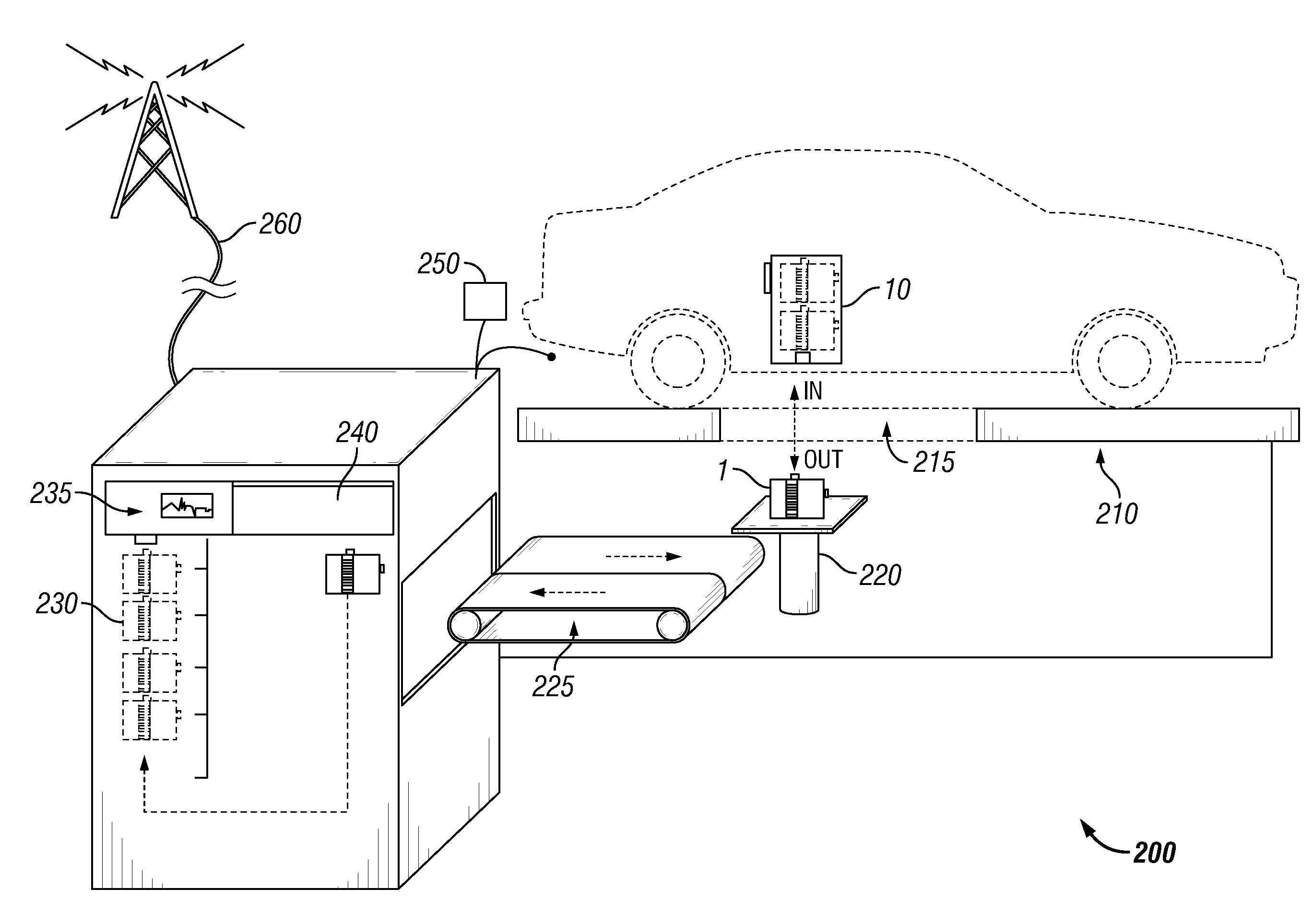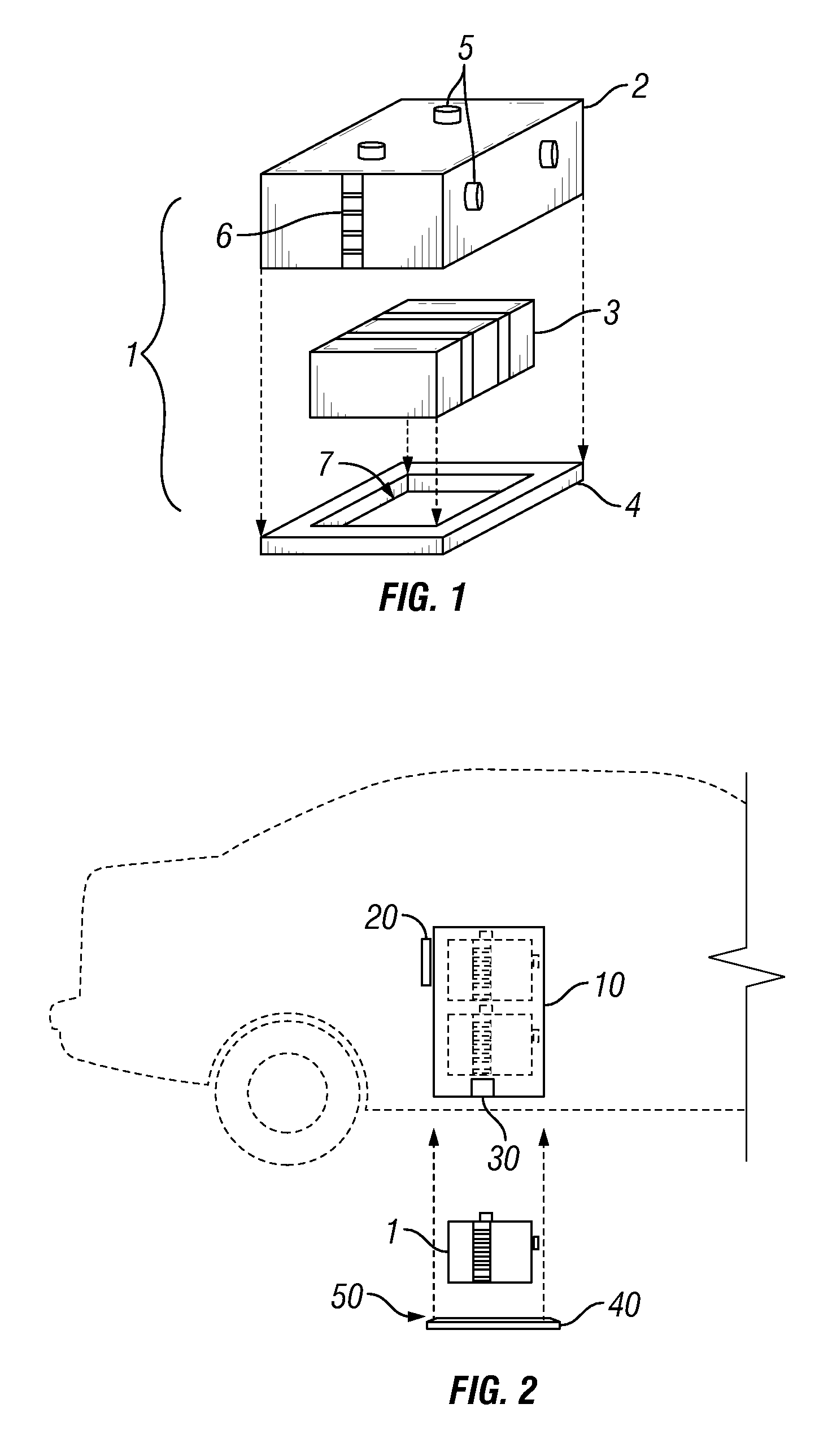Electric vehicle battery module and replacement system
a technology for electric vehicles and battery modules, applied in the field of electric vehicles, can solve the problems of relatively unimplemented solutions, limited range of electrical vehicles, and difficulty in wide-scale acceptance of electric powered vehicles
- Summary
- Abstract
- Description
- Claims
- Application Information
AI Technical Summary
Benefits of technology
Problems solved by technology
Method used
Image
Examples
Embodiment Construction
[0010]The electric vehicle battery modular replacement system disclosed herein is comprised of a battery carrier, a vehicle battery compartment, and a service station for the prompt removal and replacement of spent electric vehicle batteries. The charge carrier, or battery, is contained in a battery carrier. The battery carrier is designed to interface with the vehicle battery compartment. In embodiments the battery carrier has one positive conductor and one negative conductor that are coupled to the vehicles powertrain. Additionally, the battery carrier has a computer interface as a means of communicating with the vehicle control computer. In embodiments, the battery carrier has a mechanical means of being moved into the vehicle battery compartment. Preferably, the vehicle battery compartment holds a plurality of battery carriers to provide scalable charge storage within the electric vehicle.
[0011]The vehicle battery compartment is designed to allow access from below the vehicle. I...
PUM
| Property | Measurement | Unit |
|---|---|---|
| power | aaaaa | aaaaa |
| energy | aaaaa | aaaaa |
| distances | aaaaa | aaaaa |
Abstract
Description
Claims
Application Information
 Login to View More
Login to View More - R&D
- Intellectual Property
- Life Sciences
- Materials
- Tech Scout
- Unparalleled Data Quality
- Higher Quality Content
- 60% Fewer Hallucinations
Browse by: Latest US Patents, China's latest patents, Technical Efficacy Thesaurus, Application Domain, Technology Topic, Popular Technical Reports.
© 2025 PatSnap. All rights reserved.Legal|Privacy policy|Modern Slavery Act Transparency Statement|Sitemap|About US| Contact US: help@patsnap.com



